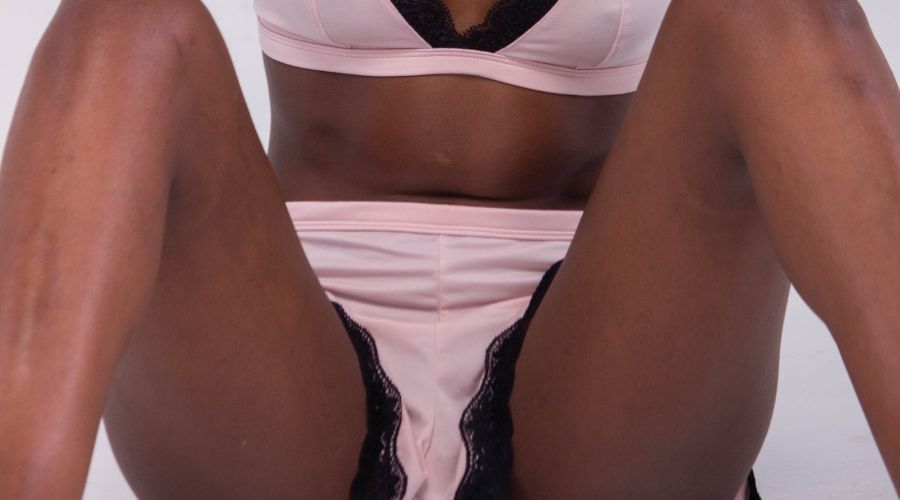A woman’s vaginal area is one of the most delicate and most important areas of her body, and events like having a baby or aging can bring about significant changes. Childbirth can cause damage that affects the function, sensation, and appearance of this region which can be severe, especially after multiple vaginal deliveries. The natural aging process and menopause can also create unwanted changes, including dryness and laxity.
The term vaginal rejuvenation is often used to describe treatments that are used to correct these functional or aesthetic concerns and can have a significant influence on a woman’s self-esteem, sexual satisfaction, and quality of life.
Today we are going to discuss the question “Does vaginal rejuvenation work?” by looking at research findings, and we will talk about why women choose these procedures.
What Vaginal Issues Can Childbirth And Aging Cause?
During normal childbirth, the vaginal area goes through significant stretching and strain to allow the baby to exit a woman’s body. Some of the damage that can be caused during this event can be restored through the body’s natural healing process, but often multiple vaginal deliveries can leave more damage than her body can repair on its own. Also, menopause and the aging process can cause changes that can affect functionality. Some of these issues can include:
- Vaginal laxity: Where the tissues and muscles have been overstretched and cannot return to their normal position and often affects sexual sensation and pleasure;
- Pelvic floor damage: When the pelvic muscles become torn or overly stretched out, the pelvic organs can drop or shift (prolapse) and cause issues like urinary incontinence;
- Decreased sexual satisfaction: Damage to nerves and tissues can reduce sensitivity, hormonal changes can cause vaginal dryness, irritation, or atrophic changes, and significantly reduce sexual pleasure or even cause pain or discomfort;
- Cosmetic changes: Childbirth and aging can cause changes in the outward appearance of the vaginal area that can be distressing to some women.
Why Do Women Choose Vaginal Rejuvenation?
The decision to undergo vaginal rejuvenation is very personal, and each woman has her own reasons for choosing it, but ultimately they believe it will enhance their quality of life for reasons including:
- To restore or enhance the function, such as correct urinary incontinence, vaginal dryness, pelvic organ prolapse, or correct an elongated labia that causes discomfort;
- To improve sexual satisfaction by tightening vaginal muscles and tissue to restore sensitivity;
- To improve the appearance of their genitals and correct aesthetic issues such as changes in skin tone, excess loose skin, or labia symmetry;
- To provide greater confidence in intimate relationships and during everyday activities.
What Types Of Treatments Are Offered For Vaginal Rejuvenation?
There are both surgical and non-surgical options for vaginal rejuvenation, and each has advantages and limitations based on the patient’s individual needs and circumstances.
Surgical Options
Surgical procedures for vaginal rejuvenation can correct more serious issues and offer long-lasting results. They are considered safe if performed by a board-certified surgeon who has extensive experience in vaginal rejuvenation; however, they do require the use of anesthesia and involve an extended recovery period.
- Vaginoplasty is a surgery to tighten the vaginal muscles and tissues to restore function and improve sexual sensation.
- Labiaplasty is a surgical procedure that reshapes or reduces the size of the labia minora or majora to enhance their appearance or eliminate discomfort caused by an enlarged labia.
- Clitoral hood reduction is a surgical procedure completed to eliminate some of the excess skin and tissue of the clitoral hood.
Non-Surgical Options
Vaginal rejuvenation options that do not require surgery may not offer as dramatic or long-lasting results as surgical options; however, they pose fewer risks when compared with surgery. There is normally no need for anesthesia, and minimal downtime is required for these treatments, but multiple sessions may be required to achieve the desired results.
- Radiofrequency (RF) treatments are non-invasive and use RF heat energy to tighten vaginal tissues and stimulate new collagen production. They are most effective when used to correct mild to moderate laxity and can often provide relief for issues like vaginal dryness or incontinence. Recovery time is much shorter than after surgery and ranges from a day to two initially and between 3 to 5 days before sexual activity can be resumed.
- Laser treatments are also non-invasive and involve using a fractional ablative laser to create tiny wounds in the vaginal tissue. These injuries trigger the natural healing response of the body, and new collagen is produced to help restore the elasticity and structure of the surrounding tissues. Laser treatments do not involve surgery and have relatively short recovery times of just a few days. Patients are normally cleared to return to sexual activity after 5 days.
How Effective Is Vaginal Rejuvenation?
The results of vaginal rejuvenation vary depending on the individual and the procedure chosen, but studies and patient feedback show that it is often effective in alleviating their concerns. Many women report that issues with laxity, dryness, and sexual satisfaction have improved after their treatment.
Surgical Vaginal Rejuvenation
Research has reported that surgical results are more dramatic and can provide the most correction and long-lasting improvements. A study that focused on 250 women who complained of excess laxity and decreased sexual satisfaction reported that vaginoplasty surgery significantly improved their ability to orgasm, decreased discomfort, and increased their sexual satisfaction.
Non-Surgical Vaginal Rejuvenation
Does vaginal rejuvenation work better with laser or radiofrequency? A review conducted in November 2018 analyzed 59 previous studies involving 3,609 women who underwent vaginal rejuvenation using radiofrequency or laser therapy. The results showed favorable improvements in symptoms, especially those related to aging and menopause that are often caused by a decrease of estrogen.
Laser treatments were historically more popular for vaginal rejuvenation because they were the first technology used for this purpose, but some research studies have shown that it is not as effective for tightening and rejuvenating tissues as radiofrequency technology. Many experts prefer RF treatments over laser treatments because of the limited effectiveness and a higher risk of injury compared to radiofrequency.
What Do Patients Say About Their Vaginal Rejuvenation Before And After Results?
Due to the intimate nature of vaginal rejuvenation, there are not a huge number of women discussing this topic on social media, but here are a few remarks from real patients who shared their experiences.
Real Patient After Non-Invasive Vaginal Rejuvenation
I had non-surgical vaginal rejuvenation treatments, and the experience was surprisingly comfortable. The procedures were quick and felt warm but not painful. There was no downtime, and I was able to resume my day as usual right after. Over the next few weeks, I noticed a real improvement in both tightness and sensation, which made it worthwhile. If you are considering vaginal rejuvenation, do it!
Real Patient after Surgical Vaginal Rejuvenation
Tightening my vagina with labiaplasty changed my life! Sex after having three babies was never the same, but now it is better than ever. Labiaplasty made me feel like a new woman!
Where Can I Learn More About Vaginal Rejuvenation?
Dr. Angelina Postoev, a triple board-certified cosmetic surgeon, offers surgical and non-surgical vaginal rejuvenation at IBI Plastic Surgery & Med Spa in Atlanta. Set up a personal consultation to discuss how this procedure can benefit you and the improvements it can make to your quality of life.







